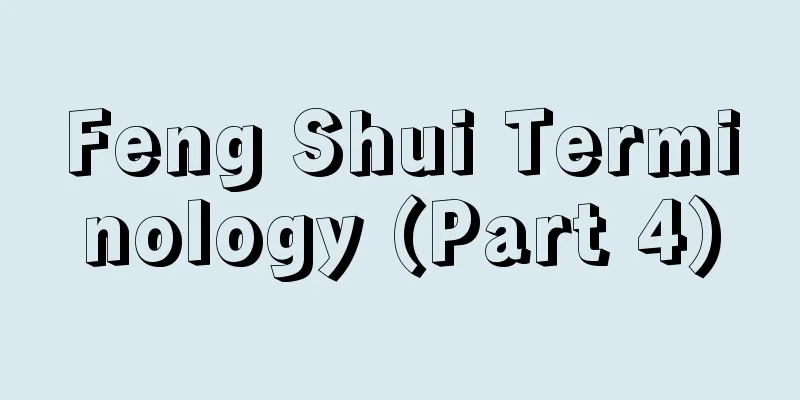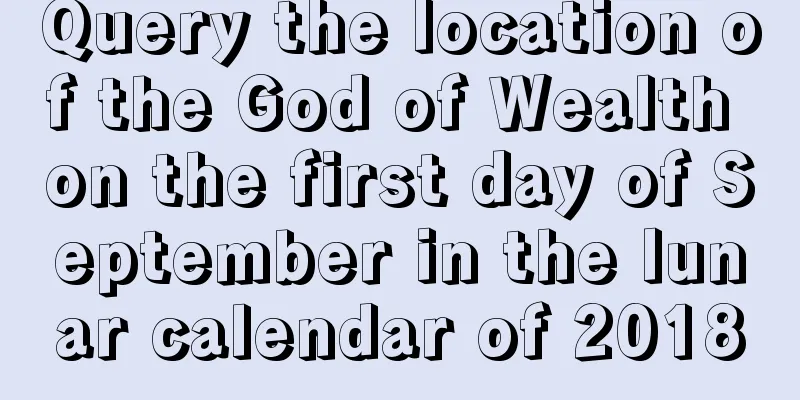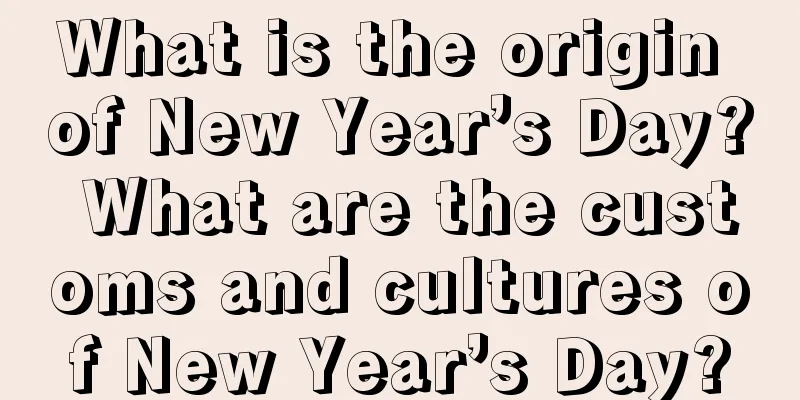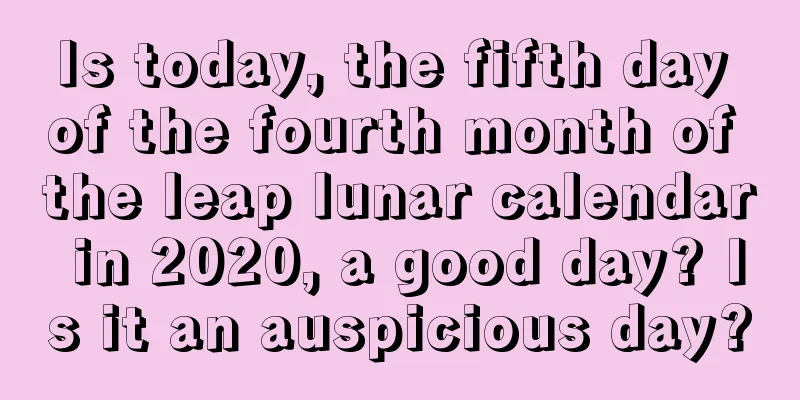Feng Shui terminology is the essence derived from the long-term experience of Feng Shui ancestors. It provides a shortcut for the general public who want to learn Feng Shui but cannot do so. It allows people to first understand Feng Shui conceptually, and then go from the shallow to the deep. Let's continue to take a look at it. The three great killers: one is Tai Sui, two is San Sha, three is Wu Huang Zheng Guan Killing Tai Sui: also known as Tai Sui Xingjun, Tai Sui is Jupiter in the sky, because Jupiter orbits once every twelve months, the ancients called Jupiter Sui Xing or Tai Sui; Tai Sui is also known as Tai Sui Xingjun, or Sui Jun, it is both a star, but also a god worshipped by the folks.
Yasheng: A kind of witchcraft used in Feng Shui activities to avoid Tai Sui and ward off evil.
Release: It is a kind of sacrificial activity in Feng Shui activities. Three Evils: The Three Evils are Robbery Evil, Disaster Evil and Sui Evil. Five Yellows: The Five Yellows are "Five Yellow Lianzhen Star", also known as Lianzhen Star, which belongs to the earth element. One school of Feng Shui combines Luoshu with nine stars to change it into nine palaces, forming different combinations according to their operation and arrangement. The fifth star is "Five Yellow Lianzhen Star", which is the only hidden star among the nine stars. The evil brought by this star is several times greater than that of the Three Evils and Tai Sui. Wherever it flies, there will be movement (such as doors, groundbreaking, drilling, wall demolition, etc.). This will cause the fortune of the house to go from good to bad, and have a great negative impact on the health of the people living in the house, especially bringing disasters such as bloodshed.
Twenty-four Mountains
Also known as the "Twenty-Four Roads". Geomancers call the twenty-four directions on the four sides of residences and tombs, which are represented by the twelve Earthly Branches (Zi, Chou, Yin, Mao, Chen, Si, Wu, Wei, Shen, You, Xu, and Hai) and the eight Heavenly Stems (Jia, Yi, Bing, Ding, Geng, Xin, Ren, and Gui) (Wu and Ji are not used) and the four hexagrams of the Eight Trigrams (Qian, Gen, Kun, and Xun). Among them, Zi points to the north, Wu points to the south, Mao points to the east, You points to the west, Gan points to the northwest, Gen points to the northeast, Kun points to the southwest, and Xun points to the southeast. The other stems and branches represent specific directions, and each direction is exactly fifteen degrees apart.
In the Tang Dynasty, Bu Zewei wrote in his "Snow Heart Fu": "The twenty-four mountains have too many names." He also wrote: "The mountains are divided into eight trigrams." The note says: "One trigram governs three mountains, such as Gan governs Xu, Gan, and Hai, Kan governs Ren, Zi, and Gui, Gen governs Chou, Gen, and Yin, Zhen governs Jia, Mao, and Yi, Xun governs Chen, Xun, and Si, Li governs Bing, Shi, and Ding, Kun governs Wei, Kun, and Shen, and Dui governs Geng, You, and Xin. Together they make up the twenty-four mountains."
Great Luck According to Huangji Jingshi Shu, sixty years of Jiazi make up one Yuan, and one Yuan of sixty years makes up a great fortune. Geomancers use it to determine the strength and weakness of the earth's energy.
meridian That is the needle on the compass. It is named so because the pointers point to Zi and Wu (north and south). Bu Zewei's "Xue Xin Fu" says: "To determine the direction, use the north-south needle as the correct direction."
Mingtang Also known as "Inner Yang". Feng shui masters call the place in front of the cave a flat and open place where water gathers and flows. According to the distance from the acupuncture point, it can be divided into small Mingtang, middle Mingtang (inner Mingtang) and large Mingtang (outer Mingtang). Liao "Leaking the Secret. "Song of Entering the Mingtang": It is wonderful when the energy of the Mingtang gathers; it is not suitable if it does not gather. Any flat area in front of the cave is the Mingtang position. ....The bright hall illuminates all directions, and it is good only when it is spacious. "Miao Xi's "Wings of the Burial Sutra." "Mingtang" says: "Mingtang is the place where water gathers in front of the cave." Xu Shanji's "What Sons of Man Should Know. Water Method: "The Mingtang should be flat, open, and gathered." In the same book, Acupuncture Point Method: "If the Mingtang is not straight and not gathered, but is tilted and tilted, then the true qi is not integrated, and even if there is a beautiful acupuncture point, it must be abandoned."
Luantou It is one of the two major schools of Feng Shui, the Jiangxi School attaches great importance to the theory of "Luan Ti". The landform is based on the four major networks of dragon, sand, cave and water, which are mainly used for divination of tombs, and secondly for selecting yang base. Ding Rui of the Qing Dynasty wrote in "Feng Shui Quhuo": "The art of Feng Shui generally falls into two categories: situation and orientation. The situation is now called mountain body, and the orientation is now called qi. The poets of the Tang and Song dynasties each had their own schools of thought." "General Catalogue of the Complete Library in the Four Branches of Literature. The Summary of Burial Books quoted Wang's Qingyan Collection of Records from the Ming Dynasty: "The art of choosing a burial site originated from Guo Pu in the Jin Dynasty.... Later generations divided the art into two schools... The Jiangxi school was initiated by Yang Yunsong, Zeng Wen, Lai Dayou, and Xie Ziyi, who were particularly proficient in the art. The school focuses on the terrain, the origin and the end of the site, and the orientation. It specifically refers to the matching of dragon cave, sand, and water, and does not care about other things. Today, everyone in the south of the Yangtze River respects it."
Regulate Qi This is the academic theory emphasized by the "Fujian School". It is one of the two major schools of geomancy along with the method of landform. It was founded in Fujian, and used the Qin and Han Dynasty's "Five Surnames House Diagram" to determine good and bad luck based on the five elements. It became popular in the South. This method focuses on the coordination of yin and yang to create life and change. It uses a compass to determine the yin and yang of the spatial orientation, and takes the eight trigrams and five elements. The flying stars are arranged to determine good and bad luck. That is to say, the time and space factors of the owner's destiny are calculated through the annual fortune and the orientation of the house and tomb, and the best choice is predicted. The method of regulating Qi is based on the principles of the Book of Changes, with the Eight Trigrams, Twelve Branches, Celestial Stars and Five Elements as four major networks. It is more abstract than the Luanti method which focuses on the terrain of mountains and rivers.
After the Ming and Qing Dynasties, practitioners tended to believe that "Luantou is the body and Li Qi is the function", and the two schools gradually merged. But in actual application, the method of regulating Qi focuses on the aspect of house construction.
Hidden Wind Geomancers say that the tight structure around the burial site can protect the burial site from being invaded by external winds that would consume the "vital energy". Guo Pu's Book of Burial says: "In Feng Shui, obtaining water is the most important, and hiding the wind is the second best." Water It refers to the water gathering into a swamp in front of the mountain. Geomancers say that the owner has abundant vitality, which is a sign of good fortune and wealth. Xu Shanji's "What Sons of Man Should Know." "Water Method": "Water in front of the cave should be gathered deeply. Water is originally moving, but its magic lies in stillness. When it is gathered, it becomes still. This is why it is precious." Miao Xiyong, "Wings of the Book of Burial". "Difficulty Explaining the Twenty-fourth Chapter": "The Classic says, 'The Vermillion Bird...is fertile when it is about to decline.' This means that when it is about to emerge, it must first gather in the water, so there is accumulation."
dragon In Feng Shui, "dragon" refers to mountain range. It is named so because the mountain range winds and undulates like a dragon. Liao "Leaking the Secret. "Song of Finding Dragons": "From the heavy and turbid condensation on the ground, there are ups and downs. The ups and downs of the momentum are the tracks, and the ancient sages called it a 'dragon'." Cai Yuanding's "Discourse on the Secrets": "Mountains are always quiet, that is, they are motionless. If they move, they will become dynamic. A mountain that becomes a dragon must leap and dance. If it lies down hard and rigid, it will not be able to melt and form."
sand Also known as "sand head". A general term used by geomancers to refer to the mountains in front, behind, left and right of the dragon's lair. In ancient times, the method of finding dragons and locating acupoints was taught by piling up sand, hence the name. Xu Shanji's "What Sons of Man Should Know." "Sand Method": "Sand refers to the mountains in front, behind, left and right of the cave. ... The mountains of Qianchao, Houle, Zuolong, Youhu, Luocheng, Shiwei, Shuikou, as well as officials, ghosts, birds and Yao are all called sand." Liao "Revealing the Secrets of Heaven. "Song of Eliminating Sand": "Where the true dragon falls, four mountains gather together, which also has its own meaning. Why did the ancient sages call it "sand"? It is wrong in principle. Yang and Zeng taught people that there is an original rule, five or nine are just from the sand, so it is called "Sand Exploding Sutra". "
hole That is "Dragon's Cave". It is the place where geomancers believe that the energy of the earth gathers. It may be in a depression or a protrusion. It is said that the "hole" has the most vitality and is suitable for burying graves or building houses. Miao Xiyong's "Wings of the Burial Sutra". In the book "Observing Shapes", it is said that "A cave is the place where mountains and water meet, where yin and yang meet, and where emotions gather." In the same book, "Strange Caves", it is said that "A cave is mainly for storage and gathering. Storage and gathering will lead to the gathering of essence and energy. If it is warm and windless, there will be no water. If there is no wind, there will be no ants. If the three evils do not invade, then the cave is found." In the first volume of "What the Son of Man Should Know", Xu Shanji said that "A cave is like the acupuncture points on the human body, and its meaning is very precise."
water Also known as "external energy". It is one of the four major contents of geomancy along with "dragon", "sand" and "cave". Geomancers believe that water is the mother of qi, and qi is transported by water, but stopped by water. To find dragon points, one must make judgments and confirmations based on the presence, size, direction, and shape of water flow. It is auspicious if the water flow is deep, calm and gentle; it is inauspicious if the water flow is turbulent and cutting. Guo's "Book of Burial": "In the method of Feng Shui, getting water is the best, and hiding the wind is the second." "The "Classic" says: 'The external air is used to gather the internal air, and the water is used to stop the incoming dragon.'" Cai Yuanding's "Discussion on the Microcosm": "There must be a mountain between two waters, so when the waters meet, the dragon ends; when the waters interact, the dragon stops; when the waters fly away, the vitality is exhausted; when the waters melt and flow, the internal air gathers." Xu Shanji's "What Sons Should Know. Water Law: "Where the water is deep, the people are rich; where the water is shallow, the people are poor; where the water gathers, the people are dense; where the water disperses, the people are separated."
Towards Kan language term. It refers to the orientation of a house or a tomb, which is one of the five important factors in geomancy along with dragon, sand, cave and water. Experts believe that the best orientation is to have your back to the mountain and face the water, sit north and face south, to avoid evil and welcome good. Orientation requires both inspection of the terrain and divination with a compass, with the terrain and orientation being the prerequisite.
As reflected in the fortune plate, the fortune stars of the mountain and direction, no matter whether it is mountain to direction, or up mountain and down water, their good or bad luck must be judged according to the actual terrain. For example, although it is auspicious to reach the mountain and direction, but there is no mountain on the sitting mountain and no water on the facing head, or there is water on the sitting mountain and a mountain on the facing head, it is still not suitable to be selected.
Since natural landscapes are often unsatisfactory, artists often resort to workarounds to solve the problem. As the word "pian" says, the direction of the mountain is determined by the mountain and changes according to the water. It is measured by the site. If the mountain dragon comes from the Zi direction and there is water in the Wu direction, then the Zi mountain and Wu direction are used, which is the most ideal Feng Shui land. However, if the water is not in the south direction but in the west direction, then use the Renshan Bingxiang to stop the qi, and the same applies to the rest.
Qian Yong of the Qing Dynasty, "Lüyuan Conghua". : : : : : : : : : : : : : : : : : : : : : : : : : : : : : : : : : : : : : : : : : : : : : : : : : : : : : : : : : : : : : : : : : : : : : : : : : : : : : : : : : : : : : : : : : : : : : : : : : : : : : : : : : : : : : : : : : : : : : : : : : : : : : : : : : : : : : : : : : : : : : : : : : : : : : : : : : : : : : : : : : : : : : : : : : : : : : : : : : : : : : : : : : : : : : : : : : : : : : : : : : : : : : : : : : : : : : : : : : : : : : : : : : : : : : : : : : : : : : : : : : : : : : : : : : : : : : : :
You may also like Feng Shui Terminology: Three Evils (I)
Feng Shui Terminology (Part 2)
Feng Shui Terminology (Part 3) |










